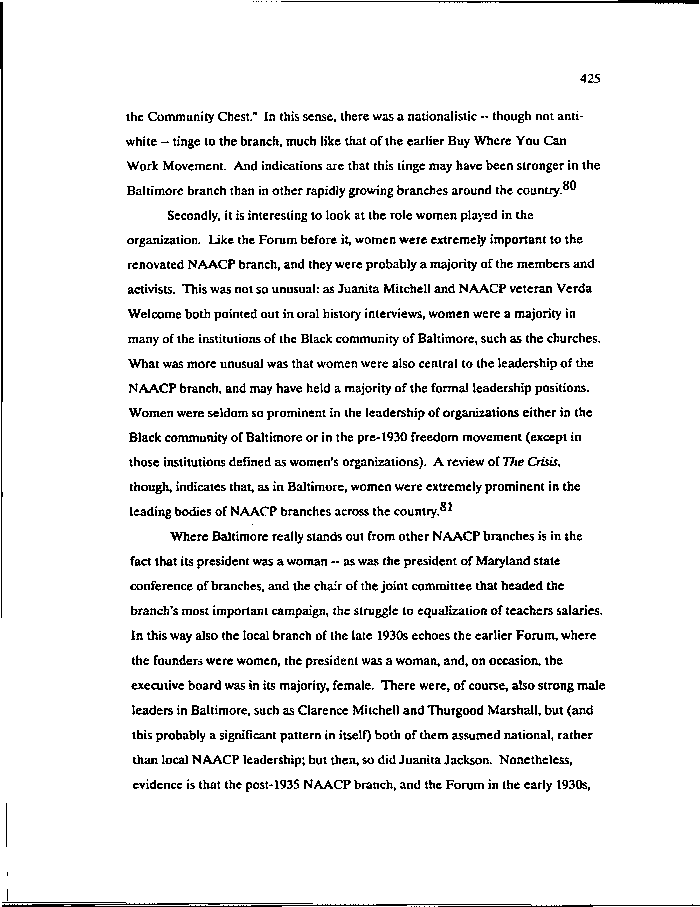|
425
the Community Chest." In this sense, there was a nationalistic - though not anti-
white - tinge to the branch, much like that of the earlier Buy Where You Can
Work Movement. And indications are that this tinge may have been stronger in the
Of\
Baltimore branch than in other rapidly growing branches around the country.
Secondly, it is interesting to look at the role women played in the
organization. Like the Forum before it, women were extremely important to the
renovated NAACP branch, and they were probably a majority of the members and
activists. This was not so unusual: as Juanita Mitchell and NAACP veteran Verda
Welcome both pointed out in oral history interviews, women were a majority in
many of the institutions of the Black community of Baltimore, such as the churches.
What was more unusual was that women were also central to the leadership of the
NAACP branch, and may have held a majority of the formal leadership positions.
Women were seldom so prominent in the leadership of organizations either in the
Black community of Baltimore or in the pre-1930 freedom movement (except in
those institutions defined as women's organizations). A review of Tlie Crisis,
though, indicates that, as in Baltimore, women were extremely prominent in the
o-i
leading bodies of NAACP branches across the country.01
Where Baltimore really stands out from other NAACP branches is in the
fact that its president was a woman -- as was the president of Maryland state
conference of branches, and the chair of the joint committee that headed the
branch's most important campaign, the struggle to equalization of teachers salaries.
In this way also the local branch of the late 1930s echoes the earlier Forum, where
the founders were women, the president was a woman, and, on occasion, the
executive board was in its majority, female. There were, of course, also strong male
leaders in Baltimore, such as Clarence Mitchell and Thurgood Marshall, but (and
this probably a significant pattern in itself) both of them assumed national, rather
than local NAACP leadership; but then, so did Juanita Jackson. Nonetheless,
evidence is that the post-1935 NAACP branch, and the Forum in the early 1930s,
|

